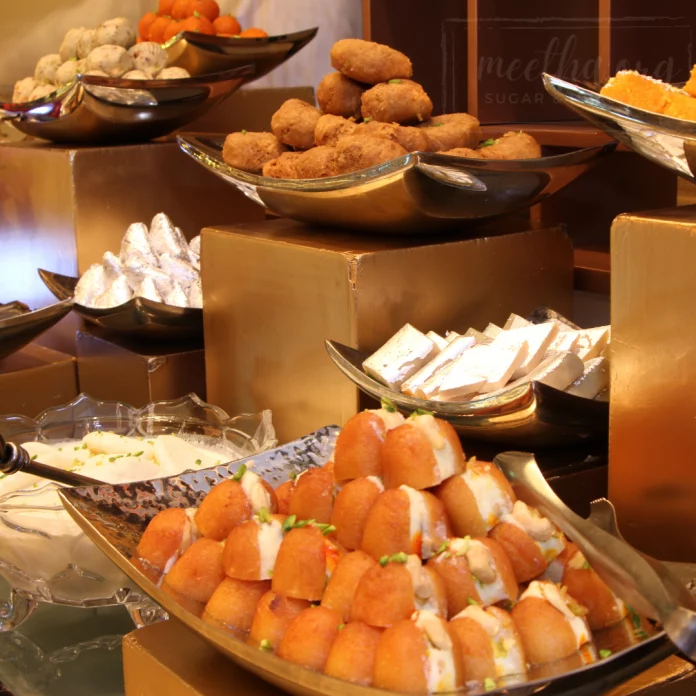Have you ever wondered why Indian festivals are synonymous with sweets? How, for different regions and seasons, sweets have been designed in a particular way?
Let this article be your guide to understand Indians’ fondness of Festivals and Sweets;
With festivals around the corner, our recollection of our childhood was all about various sweets which we got to savour. A trip down the memory lane takes us to festivities when we eagerly wait along with our family members for pujas to get over and then sweets like Gulab jamun, jalebi, peda, barfi, laddoo, rasgulla and so many more were offered to deities depending on the festival and later to be distributed amongst family and friends to gorge upon.
During festivals, sweets are among the first to be offered to gods. There is always one sweet recipe specific to the occasion used by Indian mothers which she inherited from her mother (in-laws); on the occasion of Sankranti either it is dhundha (a sweet made from jaggery and puffed rice or lentils) or Gujiya in Holi or Ghevar during the rainy season, halwa in Navaratri or Laddoos in Diwali. The ingredients were so specific that it included every goodness of taste, health & nutrition taken care for the body that it needed in that season. Most of these ingredients embrace the happiness of sugar, the goodness of floors, healthiness of dry fruits and milk products.
Dhundha or murunde or Chikki all over India and Pongal in the Southern state celebrates the harvest season of rice and sugarcane. Gujiya in Holi represents the mix of all the ingredients to keep your energy and health on optimum level. Halawa and Laddoos during Navaratri and Diwali is all about maintaining happiness and energy to celebrate the victory of good over evil.
India’s geographical and cultural diversity not only permits us to use the goodness of all food but also combines it with healthy and nutritious food sources. Thus, creating a sustainable culture to incorporate all the diversity of Festivals and Food. Our alliance with sweets is centuries old. India is the first country to extract sugar from the sugarcane crop thus getting a special festival ‘Akshay (Ikshu = sugarcane) Tritiya’ named after the particular crop.
Sugarcane (the crop used to produce sugar) has religious importance during the festival of Chhath. Sugarcane crop is the first to be offered to the deity of Chhath – Surya (Sun). And people cherish the sweetness to their hearts as it just on only gives energy but it is a source of many micronutrients.
In a gist, festivals are all about enjoying the food mother nature provides us on special occasions. I believe we should not lose this tradition of passing over the importance of making and enjoying the special foods meant for specific festivities to our next generation. Festival and sweets spread happiness to conquer hearts with “Aao meetha khate hai” (Let’s eat sweet).












